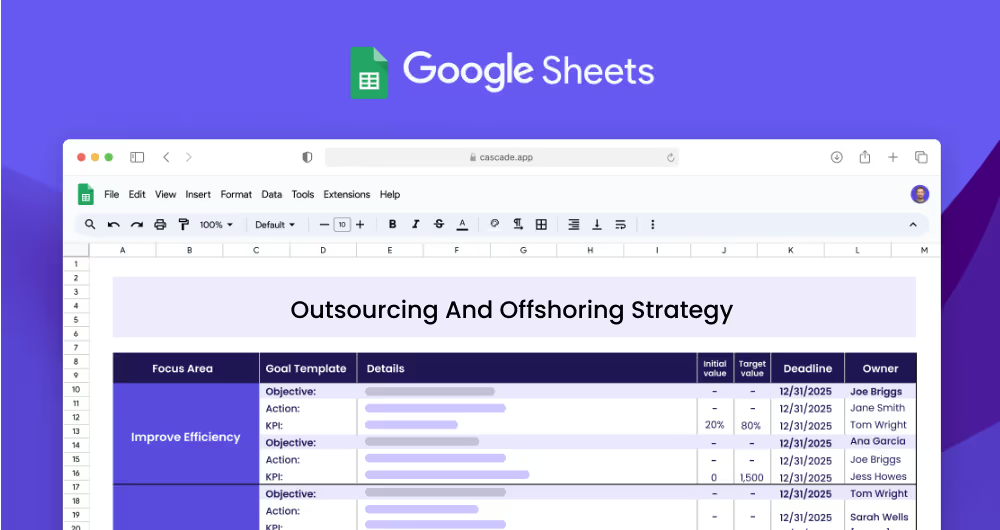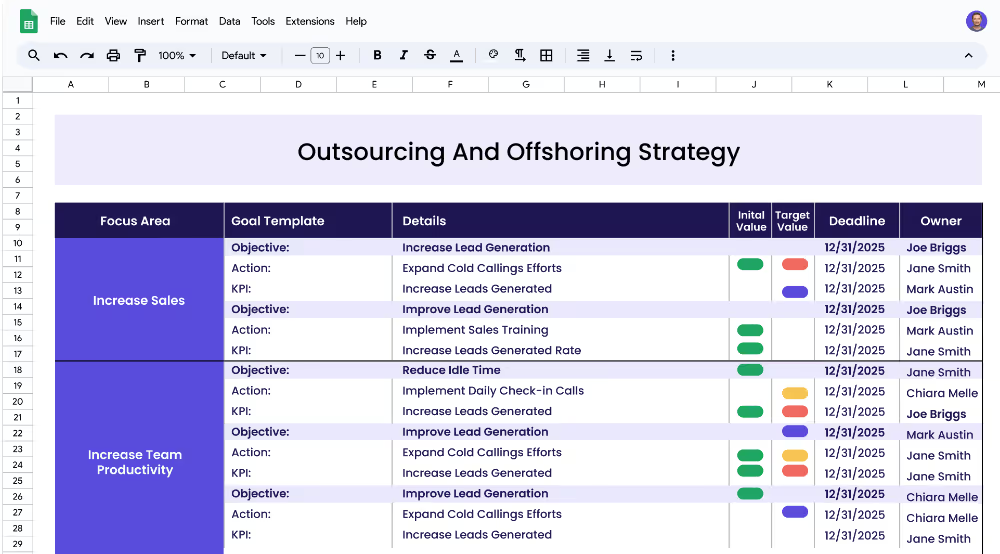An outsourcing and offshoring strategy is a plan of action used to guide a business in the process of delegating certain functions or processes to external partners located in offshore locations. This strategy helps businesses reduce costs, streamline operations, and increase efficiency. The strategy process includes identifying cost reduction opportunities, assessing potential offshoring locations, developing a risk management plan, and analyzing vendor performance.
Each focus area has its own objectives, projects, and KPIs to ensure that the strategy is comprehensive and effective.
The Outsourcing and Offshoring Strategy template is designed for organizations to create plans for outsourcing and offshoring specific business functions or processes to external partners or offshore locations. This template provides a structure for businesses to define their focus areas, objectives, and key performance indicators (KPIs) to create an effective strategy for the successful execution of their outsourcing and offshoring initiatives.
Focus areas are the general areas of the business that the strategy will be focused on. Examples of focus areas can include cost reduction, risk management, vendor performance, and productivity. It is important to clearly define these focus areas in order to ensure that the strategy is effective and achievable.
Objectives are the specific goals that need to be achieved within each focus area. These objectives should be measurable, achievable, and aligned with the overall goal of the strategy. Examples of objectives include reducing operational costs, assessing potential offshoring locations, and analyzing vendor performance.
Key performance indicators (KPIs) are the measurable targets that are used to track progress towards achieving the objectives. These KPIs should be specific, measurable, and achievable. Examples of KPIs include reducing labor costs, increasing productivity, and reducing operational costs.
Projects are the actionable steps taken to achieve the objectives and KPIs. These projects should be well-defined and have an achievable timeline. Examples of projects include researching potential offshoring locations, assessing cost savings, and creating a risk management plan.
If you’re ready to see significant advancements in your strategic planning and execution efforts, consider switching to Cascade Strategy Execution Software. Cascade outshines traditional spreadsheets by providing a dynamic, integrated platform that supports real-time updates, centralized collaboration, and automated reporting. This allows your team to remain agile, maintain perfect alignment, and achieve your strategic goals faster and more efficiently. Sign-up for free or book a demo with one of our strategy experts to start optimizing your strategies today.


